– Hello, everyone.
Thank you so much for being here today.
My name is Brenna Marsicek.
I’m the Director of Communications and Outreach with what used to be called Madison Audubon and is now called Southern Wisconsin Bird Alliance.
So we are here today to talk about birds, and specifically the problem of birds hitting windows.
So I’m just curious, a show of hands, how many of you have seen or heard a bird hit a window?
Okay, so that’s exactly the response I get in all of the talks that I give, every single person raises their hand.
This is a very big and widespread problem, but it’s a really great problem in the sense that we can actually do something about it quickly and easily, and it has instant results for birds.
So I’m really excited that you all are here today to learn about what you can do at your homes to reduce bird window collisions.
And feel free to share the news with all your neighbors.
Okay, so just a quick introduction to Southern Wisconsin Bird Alliance.
We are a nonprofit, a chapter of National Audubon, but a totally separate organization.
So we work on bird conservation through three primary legs of our mission.
The first is habitat restoration.
So this is the part of our organization that restores native habitats.
So we own about 2,500 acres in southern Wisconsin that we’ve restored to native prairie, woodland, wetlands, and all types of habitats.
And all of the creatures that you would expect to be in those native habitats are found there.
We also have an education program.
So our educators go to classrooms and afterschool programs and share a love of nature with students.
This is primarily done in the Madison area.
And we also have an advocacy component to our work.
So advocacy is sort of an umbrella term for engaging with our members to get them to stand up for issues that matter to them, to let them know when things are happening in their communities that matter to them so they can share their concerns or their support for those things.
It also refers to citizen science programs and outreach and things like this today, trying to raise awareness around the problem of bird window collisions.
And all of this work is done in ten counties in southern Wisconsin.
So this map here shows you our service area.
If you see that your town is included in this map, awesome, welcome.
And if your town is not, that’s okay.
Also awesome and welcome.
And we love to work with folks all over.
So we’re talking about window collisions here today, and I always start by talking about, why do birds matter?
I assume if you’re here, you know that they matter.
So this is a bit of preaching to the choir, but we’re gonna start with the more abstract reason for why birds matter, and that is because birds make life better.
They are beautiful, they are lovely to listen to.
There are scientific research findings around how birds, being around birds, being able to see and hear birds has a measurable positive impact on people’s mental well-being as well as their physical well-being.
And, you know, they’re a fun thing to watch, to share with your kids or your neighbors or grandparents or whoever.
And they just are, they’re beautiful.
They fly, they kind of pique our curiosity.
It’s a really great family of animals.
They are also really important to our ecosystem services.
So they are wonderful pollinators.
They are great at seed dispersal.
They eat a lot of insects and arachnids and things like ticks that we don’t really want to have too many around.
And they’re also eaten.
So they’re an important part of the food web.
And birding is a really important economic driver.
So birding is a multibillion-dollar industry in the United States, and Wisconsin is part of that.
We have great places to bird and a lot of people who like to do it.
So sales of binoculars and bird books and restaurant visits and hotel rooms, that’s all a really important part of why birds matter in Wisconsin and beyond.
But birds face a really big problem, which is our manmade structures that they have a very difficult time figuring out and that are really lethal to them.
So window collisions cause up to a billion bird deaths every single year in the United States alone.
That’s billion with a B, like, as in boy.
This is a very big, very big widespread problem.
And this graphic that you see here shows that residences are considered buildings that are one to three stories.
Low-rise buildings are between four and eleven stories, and skyscrapers or high-rises are 12 stories and taller.
So typically, people think of skyscrapers as the big problem, right?
Like, they kill a lot of birds.
It’s all the skyscrapers.
And unfortunately, they do kill a lot of birds, but there are relatively few skyscrapers on the landscape.
So just by a matter of numbers, homes, the number of homes on the landscape that all have windows that we need and appreciate as people who live in those homes, those homes account for almost half of those bird collisions every year.
So that’s a lot of birds that are dying at homes.
And yeah, it’s a problem that is… that we can look in context for how big is this compared to other things.
So as you can see in this chart here, the number one human-caused reason that birds die is outdoor cats.
So this is house cats, feral cats, barn cats, any type of cat that gets outside.
They are adorable and I love them, but they are ferocious and talented hunters, and they really enjoy catching birds.
So number one is cats, but right behind it is window collisions.
So this is an important thing to talk about so that we can try and reduce that number.
So what is it about windows and birds that don’t mix?
Like, why is this such a big problem?
Part of that has to do with the biology of a bird.
If you look at this picture of this very cheeky American redstart, I love how she looks so curious.
The eyes are placed on the side of her head.
That’s a typical position for the eyes on a songbird.
They are placed that way so that the birds can both fly and see predators coming.
And another reason that, and it also makes it difficult for them, or they see depth or perceive depth in a different way than we do because of that placement of their eyes.
Another problem that birds have when it comes to collisions is that their bones are hollow, which makes them light and able to fly.
And it also means that if they hit something hard, it’s more likely to cause serious damage.
So biology of birds is important.
They also don’t have the benefit of speaking our language.
So, you know, when we look at a picture like this, we see… We know that there is a window there because there are frames around it and you can see it’s kind of elevated.
And so it’s kind of clear to us as humans that this is a set of windows here, but birds don’t learn this from an early age.
People do, and even still, we run into windows and glass doors not uncommonly.
There are, like, thousands of YouTube videos about it.
And they’re funny to some extent, and it’s less, you know, it’s less funny when a bird hits a window.
So this challenge that birds face where they just don’t recognize it for what it is is important.
Another reason that this is a big deal is because birds fly, migrate at night.
So a lot of songbirds will migrate in the dead of night, spring and fall migration.
And they have to be able to see where they’re flying.
So if the night has, you know, if it’s cloudy or foggy, that brings the birds down below the cloud cover and it puts them in line with buildings.
And then in the morning, when they land or they come down from their migration, they see something like this.
They see, you know, a very nice-looking tree that they can fly to, to rest and refuel and maybe seek shelter or hide from a predator.
So, you know, we see this because of the purple frames.
We see that this is just a reflection in a window, but a bird would not recognize it as that.
They would be attempting to fly to that tree that they see in the glass.
Another problem with windows specifically is the arrangement of them.
Sometimes we put one set of windows running parallel to another set of windows.
And you can see in these pictures, the look that that creates, where there, it looks like it’s just clear area for that bird to fly through.
This is called a pass-through effect, and these are very dangerous and typically hotspots areas for birds to hit windows.
We see them in places like Milwaukee.
There are a lot of skywalks in Milwaukee, right, where you can kind of cross from building to building and they have glass in them.
Not to pick on Milwaukee; these are all over the place.
Campus has some and, you know, it’s all over.
So skywalks as well as, you know, three or four-season patios that are mostly glass, those are problem areas as well.
At my house, I can see in through my living room window and right out my back patio door.
I don’t know if any of you have a situation like that at your house, and sometimes it just takes walking around your house and kind of putting on your bird lens to see where these problem areas might be.
So, you know, to be really aware and looking for these spots, I think we might see more of them than we realize.
And then lights turned on at night really confuses birds.
Like I said, a lot of songbirds migrate at night and so they are attracted to the light that they see in large buildings or in homes or, you know, the streetlights.
And it confuses them, brings them in, and puts them in more contact with buildings.
And then, of course, we’re here for the Garden Expo.
So we think a lot about gardens and bird feeders.
And those are really important to us.
I’m also a gardener.
And this is not my backyard, I wish it was, but the arrangement of where our beautiful gardens are that are designed to bring birds in and to support birds, whether it’s through nectar or having a lively insect population or seed heads that are great for some birds, you know, we have to be really aware of how those birds are coming in and then potentially in a position where they’re going to hit our windows right after they visit our gardens or our feeders.
Especially when those gardens and feeders are near to windows.
So we’re gonna talk a little bit more about that a bit later.
So a lot of the birds that are really susceptible to window collisions are some of our favorite birds.
Look at this list.
This is the top– what is this?
Nine species of birds that our Bird Collision Corps volunteers– I’m gonna talk about that in a bit, but it’s a citizen science group that studies window collisions in Madison.
This is the top nine species of birds that they most frequently find on their surveys.
I think this is incredible in part because some of the most beloved species are up here: hummingbirds, cedar waxwings, some warblers.
You know, it’s not just these beautiful, charismatic, wonderful native species.
It’s a wide variety of them too.
Like, there’s a woodpecker up here and there’s a sparrow species up here.
And so it affects all types of birds, particularly ones that migrate, which makes sense, right?
Because during migration, they’re moving fast, they’re moving with purpose, they have to go.
And just by, because of that, they have to be on the move, that puts them statistically at a worse position for getting in trouble with collisions.
You can also see here that there are some resident or semi-resident bird species like robins and mourning dove that stay, some populations stay in Wisconsin year-round.
So it’s not just these long-distance migrants.
It’s some resident birds as well.
And it’s not just during migration.
This happens year-round.
Although, I will say our Bird Collision Corps program has found that fall has twice as many collisions as spring.
That’s just from our own data that we’ve collected.
A lot of people wonder why that might be.
The leading theories as to why this is, is because it’s right after nesting season, right?
There are just more birds on the landscape in fall, and many of them are migrating for the first time.
Okay, so let’s come back to the main idea here, which is that windows kill a lot of birds, up to a billion birds a year, and almost half of those happen at our homes.
And like I said, I love this problem for the fact that it is solvable.
We can control how this problem is at our own houses.
You know, this is something that we can do something about.
It’s not a big piece of legislation and it’s not climate change.
Many things need to be addressed, but this is something we can address in a weekend and, you know, for 40 bucks.
And it’s, I think, really empowering.
So once you decide that you know that you wanna do something about this problem at your house, there are a few tips or places to start that I would recommend.
The main goals here are to reduce that reflection that’s on the outside of the glass, and then to reduce the transparency of the glass, especially in cases where there’s a pass-through effect or that situation where there’s one pane of glass running parallel to another pane.
So to start, figure out where your problem window is.
It’s very likely that not all of your windows need some kind of window treatment.
It’s probably not all of your windows killing birds.
In most cases, it’s one or two.
And in most cases, people know where that is.
Raise your hand if you know where your problem window is.
Yeah, that’s most of the room.
A lot of people, it’s their patio door or their big picture window in the living room or some corners.
Corners are very tricky.
If there’s a window on each side of the corner that a bird would try to kind of skip through, you know, take a shortcut.
So most folks know where the problem is.
And if you don’t, just listen and watch for a little bit.
This is a very painful trial and error process if you know you wanna fix it, but you have to figure out where.
If you have a suspicion, you can start there, but it usually helps to pay attention.
And then try to find a style that you like.
So there are a ton of styles, different products that you can use.
American Bird Conservancy has a wonderful list, and I’m gonna put a link up to their website at the end of this, but they have a wonderful list of products that they’ve tested, and you can see that list and how well that treatment performed in their trials.
And then you can also figure out if it’s a price tag that you like.
You know, so a lot of these, depending on the size of your window, can be $40 or less.
It’s just a matter of deciding what you like the look of.
And if you like the look of it, you’ll keep it up for longer, which is great for you because you don’t have to redo it.
And it’s great for birds because that window is fixed for a longer period of time.
So whatever you put up, with just a couple of exceptions, whatever you put up should follow the two-inch rule.
So this is an idea that whatever you put on the window should be no more than two inches from the next thing on there.
So you can see in this picture here that the dots, I don’t know if you can see that actually, but there are dots on this glass that’s shown here, and the dots are two inches apart from each other.
Studies have shown that birds are so incredibly acrobatic and fabulous at flying that they’ll try to squeak through an opening that’s more than two inches wide.
So the two-inch rule is shown to be the most effective way to reduce window collisions.
Ideally, whatever treatment you put on your window is on the outside of the glass, and that’s to reduce that reflection.
That’s a really big driver of window collisions.
So in some cases, you can’t get to the outside of the glass.
If you live in an apartment building or you have a really tall set of windows that you can’t get to on the outside but you can on the inside, doing something on the inside will be better than nothing, but ideally, it would be on the outside.
And then, once it’s up, take note if it’s helping.
And then if there are any other windows that need to be addressed.
This isn’t a problem where you put up a window treatment to solve, like, a collision problem at one window and then it creates another problem at a different window.
That’s not the case in this situation.
Birds are trying to get to whatever’s reflected in that specific window.
And so if you treat that window, it’s likely that you fixed most or all of the problem at your house.
So if you need to repeat that process on other windows, you can see if that style works for you and repeat if you need to.
So how do we know if a window treatment is bird-safe?
Anything can say that it’s eco-friendly or, you know, green or whatever it is.
My dishwasher soap could say that; it doesn’t mean that it is.
How do you know that something is bird-safe?
American Bird Conservancy, I’m, like, their number one fan, as you can tell.
They do really great research around window collisions and they use something called glass testing tunnels.
So it looks like this.
There are two of them that they have in the United States, and both of them are located at bird banding stations.
So these are places where scientists are already there, catching birds for research purposes.
They’re handling the birds, weighing them, put a band on ’em.
When they’re done banding them, the glass researchers take the birds that are least stressed out and bring them to the tunnel.
And at the end of the tunnel, you can see there’s a person on one end of it, and on the other end are two panes of glass.
One has a window treatment on it and the other doesn’t.
And in front of both is a net so that the birds do not get hurt in this process.
And the bird only goes down the tunnel once.
So they use a lot of different birds to do these tests.
They send the bird down.
If the bird flies at the window treatment or if they see the treatment on the glass and they instead go to what’s, you know, the open, what would look like a open sky or the clear glass, they write down which way the bird chose.
And so through lots of tests like this, they’re able to come up with what’s called a material threat factor.
So if it has a low material threat factor, like a one, that means that the bird flew at that window treatment only 1 out of 100 times.
There are some things I have, like a zero, which would be brick or, you know, drywall, but most things that you’re intended to look through will have a material threat factor of one, between 1 and 100.
So all of the suggestions that I’m gonna tell you now, show you examples of now are ones that we have found people tend to like a lot, and they’re also very affordable.
So these are just, I think, four examples out of dozens, scores of treatments that you can put up.
And so this is just to get you started with the idea of it.
And if you don’t like any of these, you can jump on American Bird Conservancy’s website and find some other ideas.
So the first one we’re gonna start with, it’s my favorite, the good old-fashioned insect screen.
This is an incredible product for reducing window collisions.
It has a material threat factor of one.
So this is very, very effective at reducing collisions.
You can see in the picture on the left that there’s a window that has a screen on it and next to it, there’s a much more reflective window.
So you can just see, by comparison there, the difference in the reflection, just by putting the insect screen.
So if you have insect screens in your basement that you haven’t used for a couple of years, I recommend starting there, putting those back up and see if that helps.
In some cases, if you have a casement window or a crank window, your screen is on the inside of the glass.
And so that screen would help with the transparency issue, but not the reflection issue.
So you may still have problems with reflection on your window since your screen is on the inside of the glass.
So just something to keep in mind.
Another example of low cost and effective is using tempera paint.
This is really great for schools and libraries.
The picture on the right is Pinney Library in Madison.
They have a really awesome tempera paint design on their glass.
They have kind of a pass-through situation.
And so this has done a nice job of reducing window collisions.
And it’s also really fun.
You know, this is fun for kids and for artists.
Or if you want to paint a design that’s, you know, themed for the Badger game on the weekend, you can do that, because tempera paint is washable.
So you can wash it off and put something up.
Of course, the drawback is that if you’re putting it on the outside of the glass and it rains, your tempera paint is looking very sad and it needs to be redone.
So this is not practical in most window situations, but if you have an overhang, you know, if your front door has a pass-through effect that leads out to the windows in the back of the house, for example, and there’s an overhang over your front door, you can paint something there and it’d be protected from the weather.
Tempera paint comes in a whole bunch of different colors.
It’s easy to work with and it’s super cheap.
It’s, like, three bucks for a big bottle of it at a craft store.
So again, when you put up the painting, whatever it is, keep that two-inch rule in mind.
So the picture on the right is by FLAP Canada.
They’re a really great group based in Canada.
And they have designed this so that it’s really aesthetically pleasing, but it’s also following that two-inch rule.
So the material threat factor on this one is really variable because it’s a do-it-yourself thing and if you don’t follow the two-inch rule, the material threat factor is gonna go up.
You know, it’s not gonna be as effective.
So it depends on how you put it on, but if it follows that two-inch rule, it’s really quite effective.
The next one are these dots or grids.
This is a very popular option.
A lot of people really like this.
So these dots that you see here are, a number of companies make them, but they’re a semi-permanent decal that goes on the outside of the glass.
So you buy your little kit, it comes with a roll of tape like this, and I’ll show you more in just a moment.
It also comes with a paper yardstick basically that you can use when you’re putting up your dots.
It comes with a squeegee and some instructions.
You clean your window really well; don’t use Windex ’cause it leaves a film of, like, chemical on your window.
So you have to use some kind of natural product that doesn’t do that.
Otherwise, you put up your dots and then it, like, gets really hot and they start melting down your glass.
So I recommend a good, thorough clean, not using a product like Windex.
But you get your tape out, you measure down two inches from the top of your window.
You press the tape onto the glass and then you use your squeegee to really push it on there and get it nice and stuck on there.
You pull the tape back, and just the dots remain.
So you can see on the window example here.
Those dots are, they come premeasured at two inches apart on the tape.
So all you have to do is measure two inches down or however your window is arranged.
It might be two inches apart if you go vertical instead of horizontal.
So it’s pretty easy.
It’s usually best done with a partner so that one of you can be on one side and the other, and you can press and it’s nice and level, but it’s something that you can do in a weekend and have it done, and they’re very, very effective.
So these are a material threat factor of seven or more depending on the company and their product.
But the dots that are put on here are rated for Wisconsin weather.
You know how we get all sorts of weather here.
So it can withstand UV, like bright sunlight, it can withstand snow and rain and ice and wind and heat and cold.
So they have a lifespan of, they’re rated for ten years, but I know of buildings that have had ’em up for 40 or more and they’re going strong.
So when you wash your windows, a lot of people ask, do they leave little drips underneath?
And from everything I hear from other people, they don’t, because they’re pretty flat.
And so you can wash windows like normally and it doesn’t leave a problem area underneath each of the dots.
So this works really great for big picture windows.
It works really well for sliding glass doors so that you can have the window treatment on the glass.
They work in a lot of really different settings and it’s a really nice product.
You can get ’em in different colors as well.
So they come in white or black or dark gray and a number of ’em.
So I do have a few boxes up here that SOS, Save Our Songbirds, they have a booth here and they have kits there, but I also have some of their kits here.
So if you wanna grab one afterwards, they’re about a $25 value, but you can make a donation of however much you feel comfortable with and try it out.
This is supposed to be, like, a starter kit, so it’s rated to be enough dots for 16 square feet.
So if you have a big picture window, that probably won’t be enough, but it’s at least enough to get you started.
Okay, so the next one that we’ll talk about is a fun one.
These are called paracord curtains or zen curtains or Acopian BirdSavers.
So I have an example up here.
I don’t know if you can see, but these are paracord.
Paracord is a type of material that is used in parachutes.
And so it’s slippery, it’s a nylon material.
It doesn’t tangle easily, it doesn’t decompose quickly.
You know, it works really well for these curtains because they’re on the outside of the glass and they don’t get all, like, snagged up in each other, even if the wind comes through or there’s some ice, you know, they do a good job of withstanding all types of weather in Wisconsin.
So the idea with these paracord curtains is it, you can, you know, measure your window across, have some kind of horizontal bar.
You can even use paracord on the top of your paracord curtain.
You can see in the picture on the right that that’s what this person has done, is just use paracord across the top.
Or you can use PVC or you can use whatever you want that goes across the top.
You tie a vertical paracord to the top and then just let it dangle down in front of your entire window.
You would cut it at the bottom, or if you’re measuring, at least that vertical space.
And then you have your cord all the way down from top to bottom in front of the window, you move over a few inches, hang another cord, another one, and another, and all the way across your window.
These are super effective.
And so they have a material threat factor of five.
They’re really affordable and they’re fun to make.
So you can buy big spools of paracord at a craft store or online and you can, you know, have a little sewing circle but with paracord.
So they’re really fun to make in groups and together and super easy.
They’re a really fun and great product.
So the website, Acopian BirdSavers, has details on how to make your own curtain or you can order one from them.
So you put in the measurements of your window and they’ll send you a pre-cut, preshrunk, pre-melted ends and all you have to do is just hang it up.
So Acopian BirdSavers or zen curtains.
They’re called zen curtains also because they move in the breeze and it’s a little hypnotic, like a campfire is.
So they’re really nice to look at.
A lot of people really, really enjoy them.
I have a friend who put these up.
Actually it’s Susan who took the pictures here.
She had a red-breasted nuthatch hit her windows one day after a couple years of having bird collisions.
Red-breasted nuthatches are her favorite.
So she’s like, “Okay, that’s enough, enough is enough.
I’m putting up this window treatment.”
She put it up for a couple years, had no window collisions.
And then it came time to paint her house, so she had to take her curtain down, and within 45 minutes, she had a bird hit her window.
And so, you know, it’s cases like that that it’s just so great to know how effective these are, and that you can have such an instant effect when you put them up or take them down.
Okay, so back to gardeners and some of our priorities.
What do we do about bird feeders and what do we do about our beautiful gardens that are designed to bring in birds, and especially hummingbirds?
How many of you love hummingbirds?
I mean, everybody, who doesn’t love a hummingbird?
So there’s something called a 3 or 30 rule.
And the idea here is that you want your bird feeder or bird bath or great habitat, whatever the case is, not just a bird feeder, but whatever it is that’s drawing the bird in, you want that to be within three feet of your house, and especially of a window, or more than 30.
So if it’s within three feet, if they’re at the feeder and they take off and hit your window, they’re not going fast enough that they can really injure themselves or kill themselves.
And if the feeder is 30 feet away, they’re less likely to want to come toward the house.
So this is a good rule of thumb, but really if you have a bird feeder or if you have a great garden, like I’m sure you do, you really should treat your windows in those areas, especially if there’s a feeder or bath near a window.
So as you can see in this picture here, they have Acopian BirdSavers up on their windows, and through them, you can see that they have three nearby feeders.
So this is responsible bird feeding right here, where you’re not bringing them in and then they die as a result of it.
So this is a good example of feeding birds in a really good way.
So a couple things that I’ll talk about that don’t work or don’t work as well.
How many of you have seen these hawk silhouettes in stores or on windows?
Yeah, a handful of people.
These hawks are commonly sold and billed as, you know, bird collision deterrents.
And they probably are for the exact spot that the hawk is on the glass, but because they only sell one of them and only one gets put up in a window, the bird quickly figures out that that’s not really a hawk and it also leaves a whole lot of glass for them to fly at.
So in order for these silhouettes to be effective, you’d have to follow the two-inch rule, and that would mean that there are so many on your window, it’s not a window anymore, right?
So there are a lot of options that are better than a silhouette like this.
And there are some products that are kind of similar but have a UV material in them.
They come in, like, a vinyl cling that you can put on your window.
Those are better, but not all birds see in UV.
And so it doesn’t solve the problem entirely.
And again, you’d have to follow that two-inch rule.
And again, putting a treatment on the inside of the glass, not to say that it isn’t effective.
It’s just not quite as good as if you’re able to put it on the outside.
So really ideally, the treatment would go on the outside of the glass.
Okay, so, so far, we’ve talked a lot about houses and yards, but I want you to know that this all scales up as well.
So in Madison, we’ve been working on a project called the Bird Collision Corps, and this is a citizen science program where we train volunteers.
Those volunteers are assigned or they pick which site they wanna work at and which day of the week they wanna do their surveys.
We give them a survey kit, and then during spring and fall migration, they go out on their day and survey the building that they signed up for.
They walk around the outside of the building and they look on the glass, on the ground, in the landscaping, under rocks, in grates, and they look for any birds or evidence of birds that have hit windows.
This is a really…
This is a tough cookie kind of program.
You have to have a certain personality type to feel like this is the thing for you, right?
Because the goal is to find a dead bird.
Like, that’s not really anyone’s dream, but this is a really important program because we’re able to document where these hotspots are for collisions and then work with those site owners to find a window treatment that would work for them, help them find funding if need be, and then really celebrate when they put those window treatments up.
So that’s always the goal, is not just to collect the data, but to do something with it, to do something useful with it.
So the sites that you see up on the screen now are all the program partners that we had this past fall.
And we also worked with two elementary schools.
So there was a kindergarten class and a third grade class that went out and did daily surveys on their school days.
And kids are really good at finding birds, I gotta tell you.
It’s really interesting, and they notice such incredible things about them too.
So it’s really fun working with kids.
[audience member speaking indistinctly] Yeah, so the question was why isn’t Madison Public Library in the Bird Collision Corps program?
Not to say that it couldn’t be.
We just haven’t worked with them yet.
And our approach to partnering on this program is to really form a partnership from the start so that the site owner feels bought into this program and doesn’t feel attacked when we come to them and say, “You’ve got a problem at this window.”
They’re already interested and ready to do something about it.
And so we work closely with them, and so it’s mostly a capacity issue.
And so there’s lots of opportunities to do other buildings too.
These are just the ones that we’ve worked with so far.
Okay, so you can see a couple of our volunteers here.
They found a white-throated sparrow outside of Camp Randall in Madison.
So they document any evidence that the collision happened, you know, so in this case, it would be the actual bird, and put it into our data portal.
All the volunteers do this if they find any evidence of a bird collision.
And then at the end of the season, at the end of the year, over the course of time, we have these really nice data sets.
So if they find a dead bird, they bag it up and put a label with it and put it in the freezer.
We, at the end of the season, crosscheck the IDs for all of these birds that are submitted.
And then a lot of times, those birds are prepped and used for educational purposes in, like, ornithology classes and other student programs.
If the bird is alive, they take the bird to the Dane County Humane Society’s Wildlife Center, and they’re wonderful at rehabilitating birds, but even they are unable to save them all.
So the statistic is that approximately only 25% of birds that hit windows and don’t instantly die, only 25% of them end up living.
So if you’ve seen a bird hit a window and it flies away, a lot of times our instinct is to be like, “Yay, it lived,” but it’s likely that the bird has either internal injuries or some type of injury that makes it more susceptible to become prey or that they just have something that they’re hiding or going to a place that’s more private and dark where they can die.
So sorry to burst your bubble, but that’s the reality of this problem.
Okay, so this is all the monitoring that our volunteers do.
We have about 100 or so volunteers each spring and fall where they go around and look for bird collisions.
And through all of this work, we have been able to make some really awesome change in Madison.
In 2020, we were really involved with the city developing and passing the first bird-safe glass ordinance in Wisconsin.
So that ordinance says that any building that’s of a certain size, using a certain amount of glass has to use a bird-safe design.
So either reduce the amount of glass that you have or use bird-safe glass.
And we’ll talk about what bird-safe glass is in a moment.
As one might expect, when that legislation went through, the city was sued by a group of developers.
So it went through litigation.
And in 2022, the Dane Court judge upheld the ordinance.
So the developer group appealed that ruling.
And then in 2023, it finally went through the last hurdle of becoming approved and in the clear.
So now this ordinance is in effect and has been in effect through all of this.
So as buildings have gone up in Madison, they need to follow this ordinance.
So if you drive around Madison and look at these new apartment buildings that are going up, a lot of these apartment buildings have these multi-space, multifunctional spaces on the first floor, and many of them will have this dotted glass.
So if you look closely, you might be able to see that.
These set of buildings are an example of that.
So the CUNA Mutual building on the west side of Madison is the one on the top left.
That is a huge glass wall.
That’s, like, four stories and it’s an enormous building, but it uses bird-safe glass.
It uses the one on the left, and it’s called frit.
And frit is when there’s a pattern baked or etched into the glass in the production process.
So the glass comes to the building already bird-safe.
So it follows that two-inch rule.
The picture, the frit that you see, that’s more of like a grid and they’re much tighter, and a lot more of the glass is blocked out.
This is in the UW Law building.
So they put up the bird-safe glass before there was an ordinance in this particular stairwell.
So the buildings that you see here are all buildings that have this bird-safe glass in them now.
The UW has also changed the way that they require their builders and designers to build and design buildings on the University of Wisconsin-Madison campus.
So they don’t have to follow the ordinance because they’re a separate thing, but they do because this program has shown that bird collisions are such a problem.
So it’s a really great– And not just our program has shown that, but shown that in Madison, that bird collisions are a problem.
This is an example of a window treatment that was put up.
So the glass was not originally bird-safe, but our volunteers found that this was a hotspot.
As you can see, it’s a glass walkway that’s six stories tall.
And as you know, this is a pass-through situation.
Very deadly for birds.
So they were finding a lot of dead birds at this spot.
So we worked with the UW, a number of departments to find funding for and put up this dot window treatment on five of the six stories.
And it has reduced the number of collisions by about 90%.
Similarly, at the American Family Insurance National Headquarters, they have their national headquarters in Madison.
So our volunteers have been surveying there since 2020, and they found that this skywalk was almost, it was killing as many birds as their biggest building was, just this one skywalk.
And so, you know, picture the situation, there’s this skywalk here between these buildings.
On one side is this beautifully restored oak savanna and on the other side is woodland and prairie.
And so, you know, they’re trying to do the right thing by creating habitat, which is wonderful, but it creates this ecological sink right where the birds are coming in because of it and then dying at the windows.
So they put up this window treatment in June this past year, which is amazing and wonderful.
And likewise, we found that there was a significant decrease.
So went from 14 collisions on average per season to one.
And so I know 14 doesn’t sound like a lot, but this is just volunteers finding birds on their days, you know, and we know that scavengers are very good at removing.
They tend to learn where collisions happen and so they plan their lunch route based on where windows are.
And I know it sounds funny, but I’m being serious.
And so scavenger removal rates are very high, and it’s also likely that our volunteers aren’t finding all of these birds.
So, you know, these are very conservative estimates, and it’s a really wonderful thing to have partners like American Family that want to do something about it.
And in the end, we all know that this is worth it because we wanna be able to see and have birds like this in the world.
You know, birds make life better.
And so we can do our part to make sure that they are able to do that in our yards, in Wisconsin, and beyond.
So this is a list of resources that you are welcome to snap a picture of.
The top one describes a lot of the resources that I have already talked about in this talk.
So that’s the prevent collisions link.
We also have a Bird Collision Corps season coming up in the spring, if you’re in the Madison area and want to participate.
If you’re one of those tough weeds that can stomach the idea of finding a dead bird, it actually is really remarkable to be able to see them so close.
You notice a lot of things like different shapes of the feet and the coloring and it’s, you know, it’s not all bad.
It’s really quite remarkable in some ways too.
Save Our Songbirds is a great campaign that does a lot of work on window collisions and birds-friendly coffee and planting native habitats.
And then this American Bird Conservancy link on the bottom is where you can find the list of pretty much any and all window treatment, and then what the material threat factor that goes with it is.
And I would love to see pictures or hear how it goes if you put up a window treatment at your house.
So please feel free to send me whatever feedback you have about the window treatment that you put up.
I’d love to hear about it, good or bad.
And thank you for considering to put up a window treatment.
It’s a really wonderful thing.
So with that, I will take any questions.
[audience applauding]
Search University Place Episodes
Related Stories from PBS Wisconsin's Blog

Donate to sign up. Activate and sign in to Passport. It's that easy to help PBS Wisconsin serve your community through media that educates, inspires, and entertains.
Make your membership gift today
Only for new users: Activate Passport using your code or email address
Already a member?
Look up my account
Need some help? Go to FAQ or visit PBS Passport Help
Need help accessing PBS Wisconsin anywhere?

Online Access | Platform & Device Access | Cable or Satellite Access | Over-The-Air Access
Visit Access Guide
Need help accessing PBS Wisconsin anywhere?

Visit Our
Live TV Access Guide
Online AccessPlatform & Device Access
Cable or Satellite Access
Over-The-Air Access
Visit Access Guide
 Passport
Passport


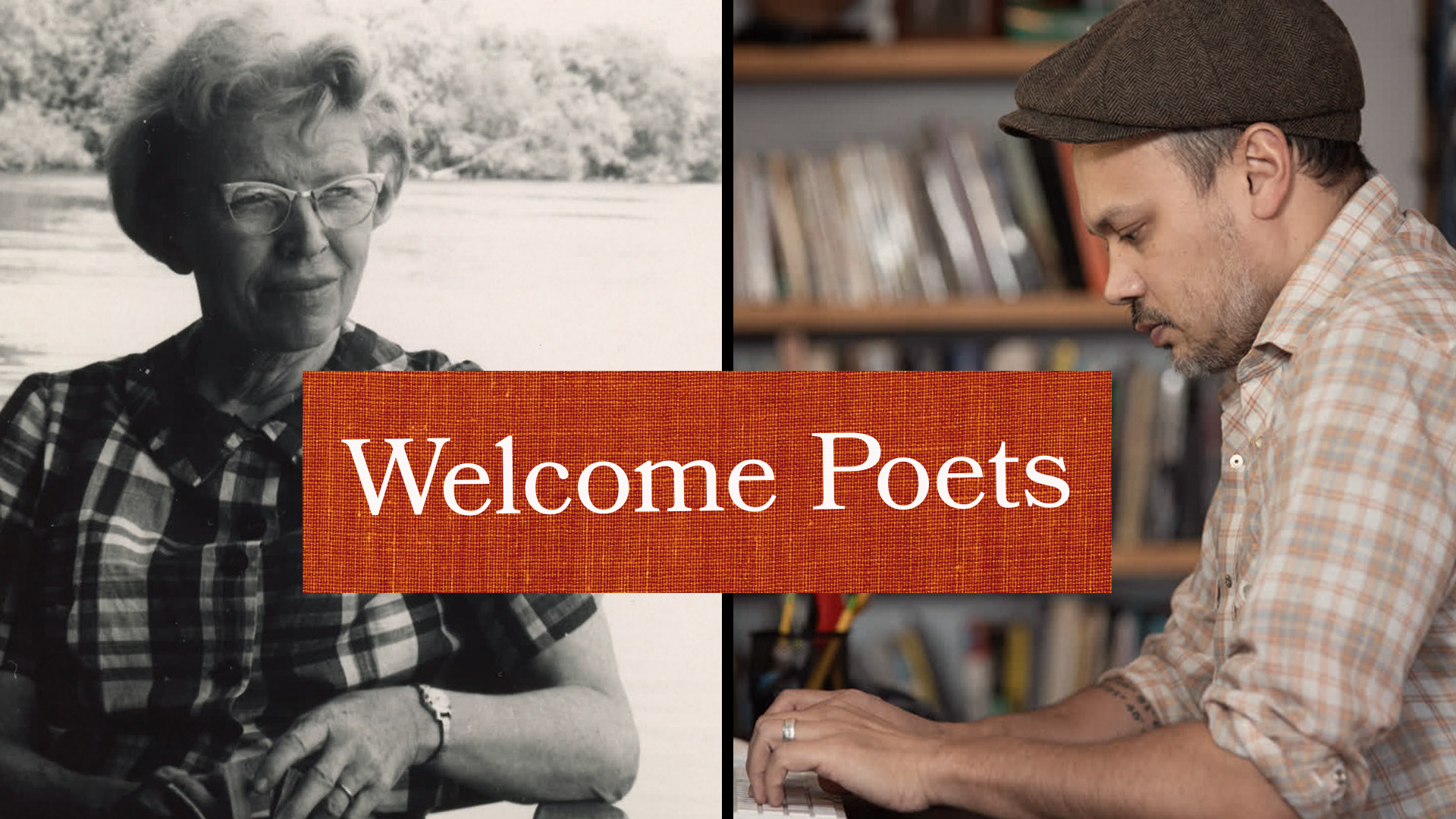




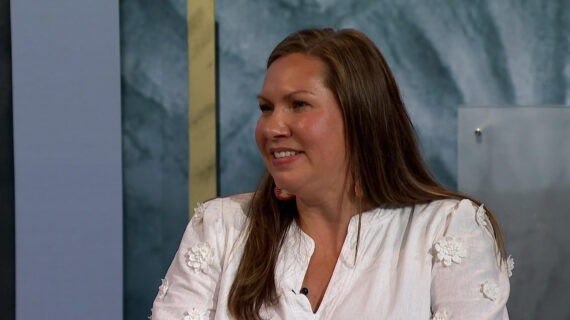
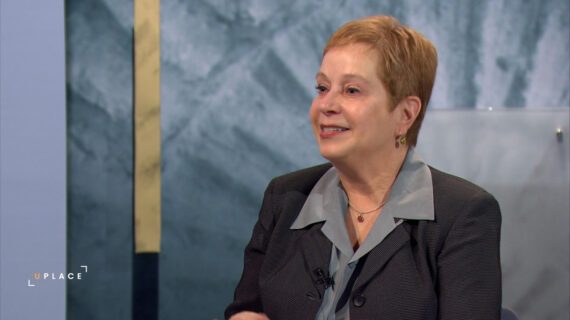
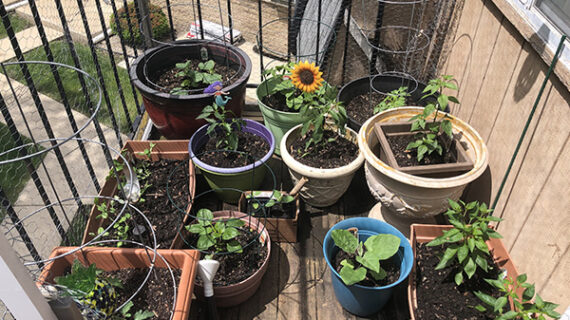
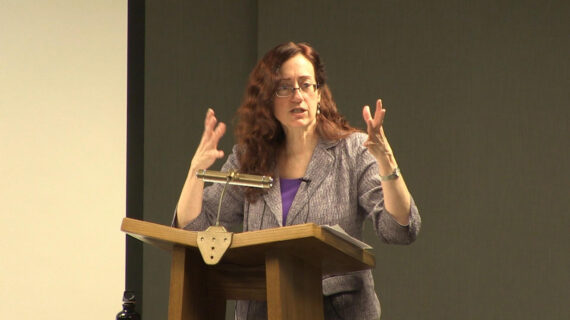
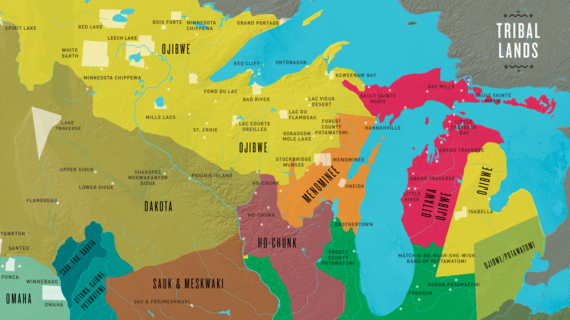
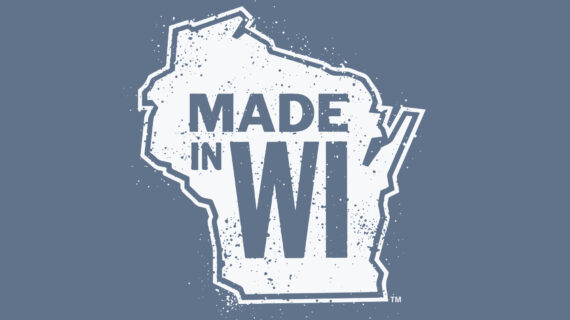

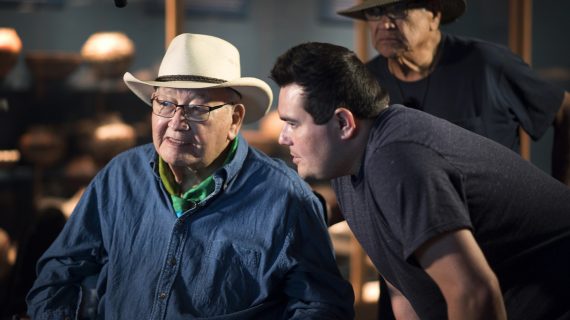



Follow Us